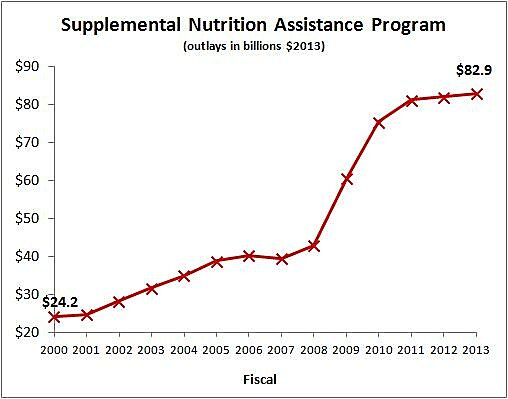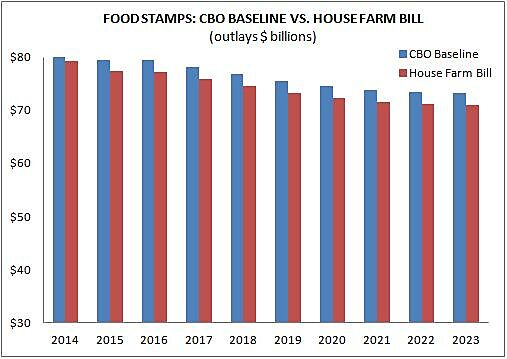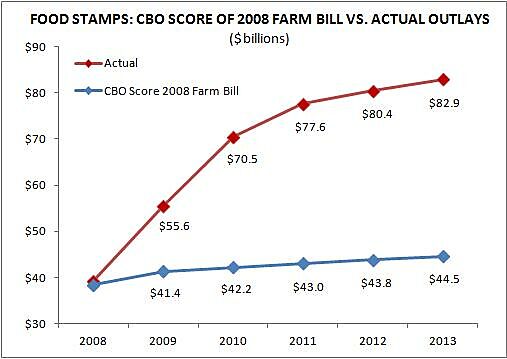Debate on the House Agriculture Committee’s version of the next farm bill will begin in the Republican-controlled chamber in June. One of the most contentious issues will be spending on the Supplemental Nutrition Assistance Program (SNAP, a.k.a, food stamps). The House Ag bill would cut SNAP spending by $20.5 billion over 10 years versus the Congressional Budget Office’s baseline. That’s too much for Democrats and it might be too little for conservative Republicans.
Earlier in the week I wrote that the federal government should not administer or fund anti-poverty programs. Unfortunately, both Republicans and Democrats support big government so that isn’t an option. So let’s put the proposed cuts in food stamps in perspective.
The first chart shows the dramatic increase in inflation-adjusted SNAP spending since 2000. (See here for a quick background on what caused SNAP spending to more than triple since 2000).
The second chart shows the projected amount of spending under the House Ag bill versus the CBO’s baseline. Sum up the difference and you get the $20.5 billion over 10 years in cuts. On an annualized basis, it becomes clear that we’re hardly talking about major cuts to the food stamps program. Moreover, as the first chart shows, spending would remain near the elevated levels of recent years.
The CBO’s baseline shows a downward trend in SNAP spending. That’s largely because the CBO assumes better economic growth going forward, which would mean lower unemployment and a reduction in the number of people using the program. However, if the CBO’s economic assumptions turn out to be optimistic, the actual outlays could be higher. The third chart shows what the CBO projected SNAP spending would be under the 2008 farm bill. Spending for food stamps this year will be almost twice what the CBO projected in 2008. The reason, of course, is the economic downturn and the Obama administration’s so-called “stimulus” efforts.
In sum, spending on food stamps has exploded and the House Ag bill would itself do little to reverse the situation. And if the economy struggles going forward, the price tag will be higher.



